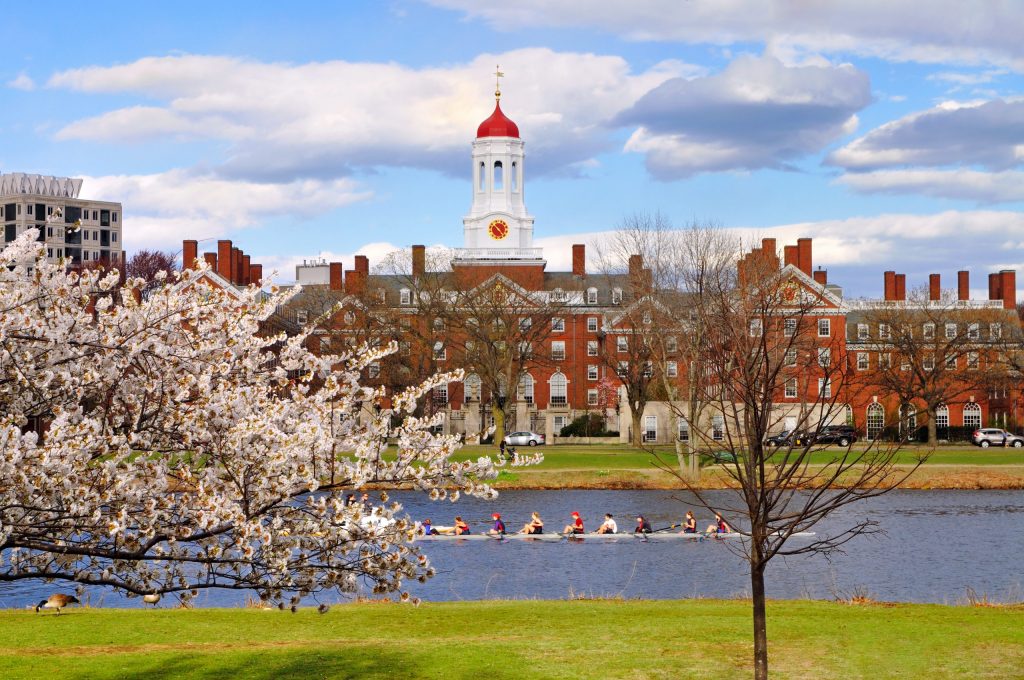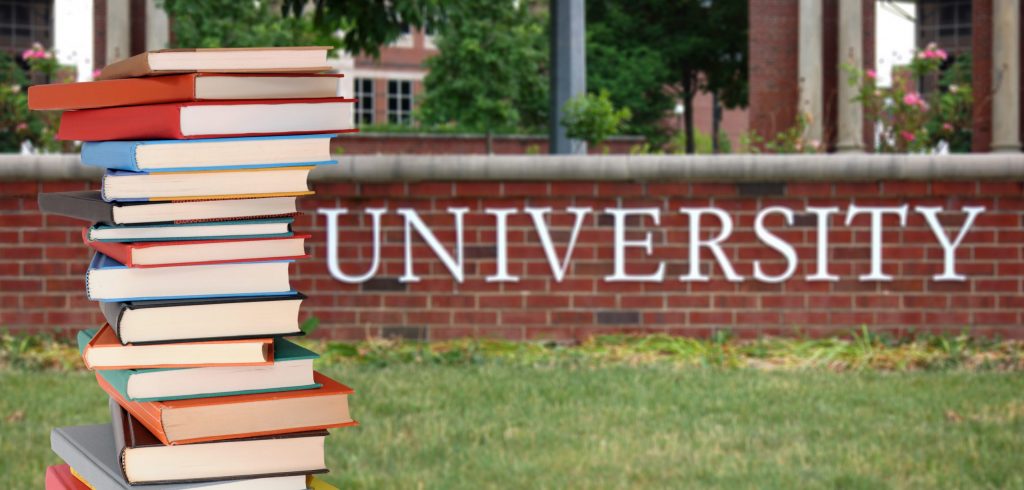Many students have a list of colleges they are interested in. Some are schools they are almost certain they’d get into, and others might be colleges they dream about attending — their ultimate #1 choices. It can be easy to overlook the importance of adding college admissions safety schools to those lists.
Students are excited and quick to focus on their top choices, spending time researching and even visiting them. But what if they don’t get accepted to their dream colleges?That’s where good safety schools for college admissions come in.
What Are College Admissions Safety Schools?
A student’s college list should include a variety of schools:
- Target schools
- Reach schools
- Safety schools
The terms “target,” “reach,” and “safety” in this context are commonly used to describe schools according to the odds a student has of being accepted. Since every student has different chances of getting into each college, every student’s college list will be unique to them.
Understanding each of these terms and the schools they describe is an important step in understanding the college admissions process.
What Are Target Schools?
Keep in mind that these terms refer to the chance a student has of getting into a particular school. A target school is a college that a student has a pretty good chance of getting into — say, a 40–70% chance of acceptance.
A good rule of thumb to follow for target schools is that you shouldn’t be surprised if you get accepted, but don’t count on it as a sure thing, either.
What Are Reach Schools?
Reach schools, also known as dream schools, are the ones that a student most likely would not be accepted into. There are two types of these schools.
The first type is the school that absolutely no one is guaranteed to get into. Schools like Stanford, Harvard, MIT, CalTech, and all the other schools with jaw-droppingly low acceptance rates are this type of reach school. No one should ever be confident about their chances of acceptance.
The second type of reach schools include those that are specific to each student. Depending on test scores, class rank, GPA, and other factors, some students have little to no chance of getting into these schools, while others have much better chances.
What Are Safety Schools?
Basically, college admissions safety schools are those that a student has a really good chance of getting into — say, at least a 75% chance. If a student has a GPA higher than 75% of applicants or a higher class rank, for example, those would be some factors that would help classify a safety school for a student.
Just like the other types of schools, safety schools are subjective; the college that one student has an excellent chance of being accepted into might be the same one that another student has little to no chance with.
Why Is It Important to Know How to Choose Good Safety Schools?
Including safety schools on your list is important for several reasons. It is vital to understand that a safety school isn’t a “lesser school” or a bad school. It’s simply a school where your academic credentials exceed those of the average accepted applicant.
If you are gathering information about safety schools, list only colleges you would be proud to attend. Choose colleges you would actually want to go to. You never know — if you end up attending, it might turn out to be the best college for you after all.
Once you know how to choose good safety schools, you should apply to two or three of them; ignoring them altogether puts you at risk of not rounding out your college applications. In other words, you don’t want to put all your eggs in one basket.
By the same token, don’t apply to any more than that because you’ll begin to take time and effort away from your other applications. By applying to safety schools, you’ll avoid the unfortunate possibility of having no options at all if you apply only to reach and target schools and do not get in.
How to Choose Good Safety Schools
When choosing good safety schools for college admissions, the best way to get started is to look at the preceding classes to estimate your odds of acceptance. Compare your class rank, SAT and ACT scores, GPA, and other academic credentials with those of students who were accepted to the school in the past.
By comparing your academic profile to those of the average freshman in each college, you can see how you stack up. If your credentials are well above that of the average accepted student for that school, you can consider it a safety school for you.
Consider Public State Schools
Some of the smaller private schools are more difficult to get into than larger public universities. This isn’t always the case; some state schools, such as the University of Michigan, are pretty selective. Others, such as Indiana University, are not.
Check to see if a school in your state offers any kind of “guaranteed admission” program. For example, students of Texas high schools are guaranteed admission to public Texas universities as long as they meet certain testing, GPA, and class rank requirements.
Don’t Forget the Small, Private Schools
Even though some of these schools are usually more difficult to get into, many of them do have high acceptance rates. Not only that, but they also often offer generous scholarships and grants, unlike some larger state schools.
Even though some private schools have hefty tuition rates, many of them also offer substantial merit aid to defray the high costs of attending. Merit aid is not based on need, so if you don’t qualify for need-based financial aid and have a solid academic profile, you may very well qualify for merit aid.
Safety Schools with High Acceptance Rates to Consider
Even though what qualifies as a safety school depends on the specific student and their academic profile, some excellent schools qualify as safeties for many students. If you’re searching for safety schools to add to your college list, consider the following:
Florida International University
With an undergraduate enrollment of 46,500 students, FIU is ranked as one of the country’s top 50 public research universities year after year. It has an acceptance rate of 64% and a very desirable location in Miami. The middle 50% SAT and ACT scores for accepted freshmen are 1030–1220 and 21–27, respectively.
The University of Wisconsin–La Crosse
If you’re looking for a solid smaller school for your list, consider UWL. This public university in Wisconsin has an undergraduate enrollment of just under 10,000 students and an acceptance rate of 74%.
Known for programs like nuclear medicine technology, anthropology, and archaeology, the school has an 84% retention rate and a 73% graduation rate, which are higher than the national average. The median SAT and ACT scores for incoming students were 1116–1296 and 21–26, respectively.
Central Michigan University
Known for being one of the largest public colleges in the state, CMU offers more than 200 degree opportunities and is well known for its holistic approach to education. Students approach issues through experiential learning and enjoy Division I athletics when they aren’t in class.
If you’re interested in CMU, compare your academic credentials with the median SAT and ACT scores for this school, which are 1010–1223 and 20–26. Central Michigan University has 11,500 students, and its acceptance rate is 77%.
Winona State University
In Winona, Minnesota, WSU is home to over 5,750 students and has an acceptance rate of 77%. It’s the oldest state school in Minnesota and has two campuses that combine to offer over 200 different degree programs.
Winona State University has the highest success rate of all Minnesota state schools; over 90% of students receive jobs relating to their degree following graduation. The median SAT and ACT scores here are 960–1130 and 19–25.
Bowling Green State University
In the beautiful state of Ohio is Bowling Green, with an undergraduate enrollment of 14,500 students and an acceptance rate of 79%. Median SAT and ACT scores here are 990–1200 and 19–25, and the school is known for its unique education structure.
Many students who value respect, teamwork, diversity, and the ideals of the greater good are drawn to BGSU.
Brigham Young University
Affiliated with The Church of Jesus Christ of Latter-day Saints, Brigham Young University has an acceptance rate of 59% and 32,000 undergraduate students. Located in Provo, Utah, this school is known for its robust language program — it offers courses in 62 different languages! The middle 50% SAT and ACT scores here are 1230–1420 and 26–32.
The Best Safety Schools for Your College List
Several other universities fit the bill as a safety school for many students, including:
- UNC Wilmington
- UNC Charlotte
- SUNY Oswego
- University of Minnesota-Duluth
- University of North Florida
- SUNY Brockport
- University of Wisconsin-La Crosse
- Louisiana State University
- Truman State University
- CSU Fullerton
- Cal Poly Pomona
One of the best ways to find the right safety schools for you is to enlist the help of college admissions advisors who know everything there is to know about schools across the U.S. They are pros at matching students with schools that suit their needs and interests, making every college search a successful one.



